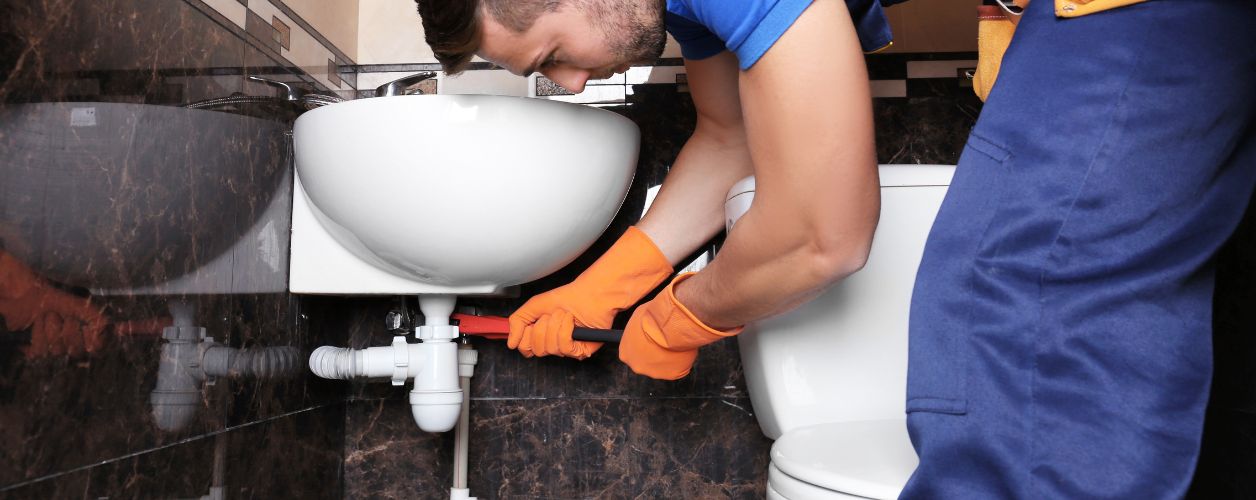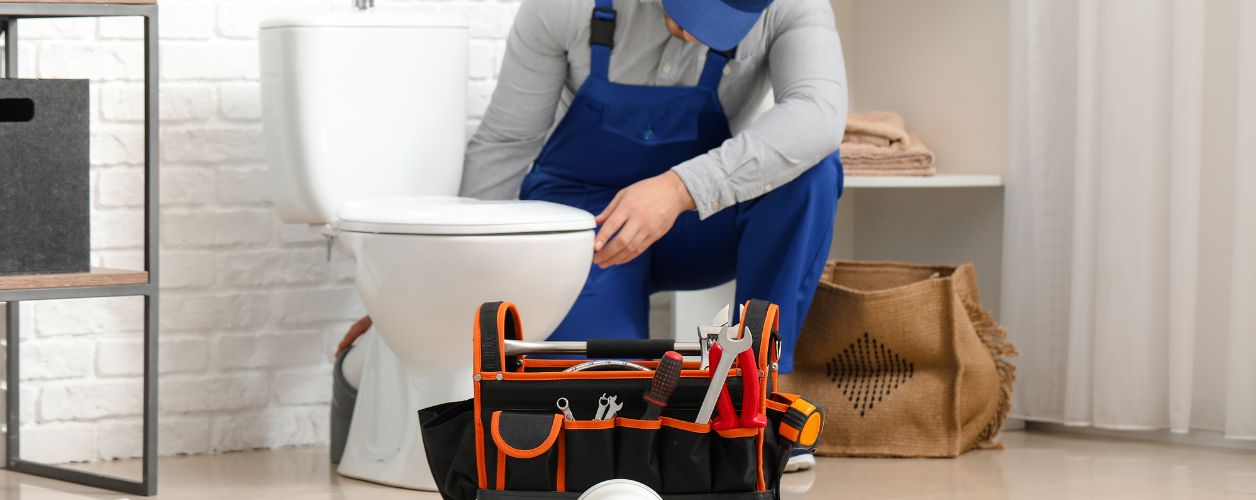Get free quotes within minutes

An obstructed toilet is perhaps one of the worst household problems that can be so exasperating to deal with. This gets disgusting when you have to fix a clogged toilet with poop. It might be that your toilet is overflowing late at night or a steady clog that has been growing increasingly worse over the past few days, but the ability to know how to unclog a toilet is a skill every tenant or homeowner should learn.
Here, we have tried to create a step-by-step process of various aspects of the problem, including how to detect the cause of the blockage, its symptoms, how to fix it yourself, or by the hands of a toilet plumber, as well as the prevention tactics to be accomplished in the future.
The clogging of toilets is known to run more than most people like to confess. They occur in old and new homes and can be slightly annoying as well as major problems in the plumbing. To fix and avoid a clog, one should understand what causes it.
Most Typical Reasons for Clogged Toilets:
Over-utilisation of toilet paper
The majority of the clogging is a result of excessive use of toilet paper in one flush. The paper can be biodegradable, but this will not quickly be changed before it clogs thereby in the older plumbing systems.
Non-Flushable Items
It turns out to be quite a common practice that baby wipes, cotton swabs, dental floss, tampons, or even kitchen towel rolls made of paper get flushed. These items cannot disintegrate in water and are capable of clogging the u-bend or the further drain lines very easily.
Low Pressure Systems
There are some of the water-saving toilets, or older toilets, which lack sufficient flush pressure to unclog. There is a higher chance that these toilets can become blocked, particularly when more than one item is flushed down them.
Hard Water Build-Up
In case of hard water, the trap or drainpipe of the toilet can become narrow as the minerals accumulate in the toilet. This predisposes to clogs even when there is proper waste or toilet paper.
Sewer Line tree roots
Though it may sound dramatic, tree roots can grow into drains and crack underground pipes. It is the cause when several drains in your house are slow or draining up.
Accidents and Children's Toys
Children also tend to put small toys, toothbrushes, and other household items in the bathroom, particularly in the toilet. These objects will be lodged in the trap or bend and form a tough blockage.
There are obvious clogs. Other people creep in gradually. Being aware of the symptoms of a blockage will make you take action early enough.
To give the task a little preparation, spend a couple of minutes preparing before doing it. The problem can be aggravated by acting impulsively or employing the wrong instruments.
Turn Off the Water
Each water closet is portrayed with a water supply valve close to the bottom of the same. Rotate this valve to the right, and this halts the circulation of water. Before filling, pour the mixture into the bowl first in case it is full already.
Secure the Local area
Plastic sheeting, newspapers, and towels should be laid at the base of the toilet. This will trap any spillage, splashes, and drips in the unclogging process.
Prepare Your Tools
Remove Excess Water If Needed
When the toilet bowl is already filled to the brim, you could take a small container or cups and scoop some water into a bucket. You will have clear space to work without dropping on the floor.
The difference is significant by using the right tool. The generally used equipment can be divided as follows:
Unlike a flat-bottomed cup plunger that is used in sinks, a flange plunger is one that is meant to be used in toilets. It comes with an additional rubber flap that inserts into the drain hole to produce tighter sealing and greater suction.
Before using the plunger, moisten it with warm water to soften the rubber so that it becomes easier to seal.
This is an adjustable cable that has an end that is Porcelain safe, a rubber-covered crank handle. It can access the clogs deep into the toilet drain, and shred them or grab and pull them out.
These, unlike chemical drain openers, have bacteria in them that consume waste that is organic waste. They are safe for pipes and septic tanks and can be left overnight.
A bucket shall be helpful to drain the excess water or pour hot water solutions.
Functions as a lubricant and assists in getting waste through the pipeline.
Do not use boiling or hot water. This helps digest waste or paper and hydrate food.
And now, since you are ready, we are going to examine different unclogging procedures, easy as well as difficult.
Perfect to deal with spongy clogs, associated with toilet paper.
Steps:
How it works: Dish soap is used as a lubricant, hot water dissolves solid materials, and brings pressure to force the blockage through.
Steps:
Tips:
Ideal for treating partial clogs and an excellent choice of chemicals.
Steps:
Steps:
In the event that you have a wet/dry vac, you can just suck the clog out.
Steps:
Warning: Do not use a regular home vacuum.
Cleaners made of enzymes come in handy when it comes to slow-pouring toilets or intermittent, slight clogs. They are very effective when they are placed overnight and regularly used as a preventive measure.
Some popular brands are:
Usage Tips:
In case you have tried everything you can do yourself and your toilet clog is not going away, you can call a professional plumber.
Indications That You Need a Toilet Plumber:
Professional toilet plumbers use a variety of effective methods to clear stubborn clogs:
Simple Everyday Routines
Teach Children Appropriate Use
Small kids tend to carry out experiments by flushing toys or objects around the house. Install child-proof locks or train them at an early age.
Keep up your Plumbing
In case you stay in an older house, get an inspection of your pipes done once a year. Early prevention measures will be able to detect problems such as root invasion of the tree or corrosion on the pipes before it can cause a blockage.
In some cases, the block is too hard to pass, and simple plunging or a hot water solution cannot help. When this happens, you may need to be inventive, particularly when it is not possible to ring in a plumber right on the spot. Some of the more sophisticated techniques, which could nevertheless be pursued on a DIY basis, are described below.
The Pressure Method in a Plastic Bottle
Here, the pressure on the drain is forced by the use of a plastic bottle as a plunger.
The way it functions:
When done correctly, this can provide sufficient pressure to force a stubborn clog. But do not forget about splashes.
When you have a clogged toilet, it may ruin your day, especially when you have visitors. However, having a more relaxed attitude and the proper equipment, you can clear it up almost by yourself. Use the simpler stuff that is safer and still known to work, such as dish soap or plunging, and only complicate later in case of extreme measures. With any seemingly eternal problem, you do not have to be afraid of seeking a professional toilet plumber.
Good maintenance, flush etiquette, and regular inspection would go a long way in ensuring that your bathroom functions well. By learning about the occurrence and the reasons why toilet clogs occur and how to deal with them, it is possible to prevent expensive repair work and stressful emergencies in the future.
